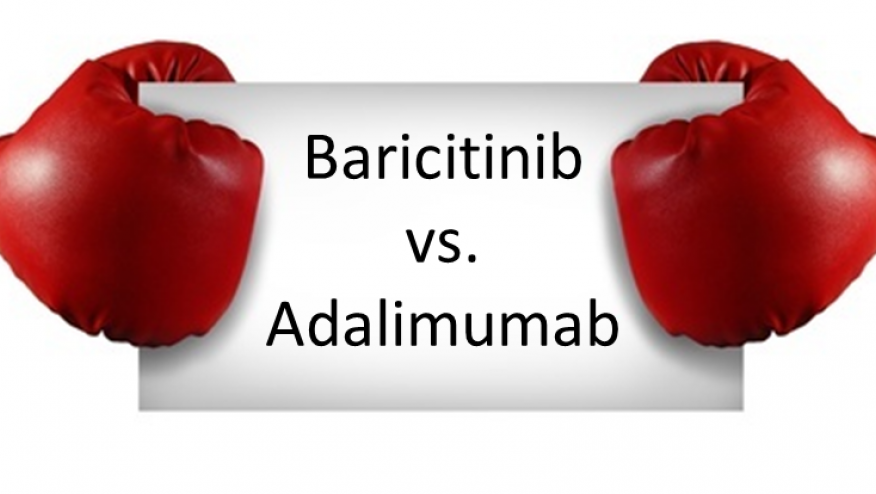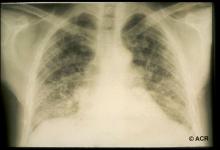Is Baricitinib Really Better Than Adalimumab in RA: Trial Results Reviewed Save

Dr. Peter Taylor and colleagues presented their results of the 52-week BEAM trial wherein baricitinib (a JAK 1, 2 inhibitor) was compared to adalimumab in both clinical and radiographic outcomes. This was the most viewed abstract online at the ACR website. (Citation source http://buff.ly/20REUTS)
This phase III trial was designed as a superiority trial with the primary endpoint being an ACR20 response at Wk 12 for bari vs. PBO. Other secondary endpoints included comparisons of bari vs. ADA for ACR20 and change in DAS28-CRP at Wk 12.
1305 MTX incomplete responder patients were randomized to receive either placebo (PBO), baricitinib (Bari) 4 mg qd, or adalimumab (ADA) 40 mg every other week. A high percentage completed the first 24 week, placebo-controlled portion of the trial (89-94%). For those not responding, early withdrawal and rescue was allowed at week 16. Higher rescue rates were seen in PBO (26%), with much lower rates for those on Bari and ADA (7% and 12%, respectively).
Baricitinib was superior to PBO at week 12 for ACR20 responses (70% vs. 40%, p≤ 0.001) and all other parameters, including ACR 20/50/70, HAQ-DI, DAS28, CDAI, and SDAI low disease activity and remission rates.
Head to head, baricitinib against ADA, ACR20/50/70 responses for Bari were 70/45/19% and 61/30/15% for ADA. At week 12, both were significantly better than PBO, and Bari was significantly better than ADA for ACR20/5/70 measures (P≤0.05 Bari vs ADA) and DAS-CRP (24% vs 19%). At week 24, Bari was superior to ADA in ACR20 and ACR70 (P≤0.05) but not ACR50, DAS28-CRP or DAS28-ESR. At week 52, Bari was superior to ADA in ACR20, ACR50 (P≤0.01) and DAS28-CRP, but not ACR70 (37% vs 31%) or DAS28-ESR.
Baricitinib versus adalimumab were not different from each other in week 16 rescues, dropouts, ACR50 at week 24, ACR70 at week 52, CDAI and SDAI at week 24, adverse events or X-ray outcomes. Overall changes in the van der Heijde modified total Sharp scores were better than PBO (+0.90 Sharp Units) but were not significantly different from each other (Bari +0.41, ADA +0.33) at weeks 12 and 24.
Safety results showed equivalent, non-surprising low numbers of SAE, SIEs, TEAEs, H. Zoster, malignancies and MACE events for both agents. Slightly (but significantly) higher serum creatinine (~0.06 mg/dl higher), LDL, and HDL levels were seen compared to PBO. There were two deaths in the group getting baricitinib, one from pneumonia and one from a bleeding duodenal ulcer.
It's currently unclear which dose will be advocated, or used, should Bari become commercially available. Current studies are being done with either a 2mg or 4 mg dose. This BEAM trial tested the higher dose (4mg/d) against standard dose of adalimumab.
These results indicate that both adalimumab and baricitinib performed admirably in this 52 week trial. Overall the responses were equivalent, but Bari may work faster than ADA based on week 12 results for ACR20/50/70 responses. ADA seemed better at X-ray outcomes. Time and further research is needed to establish the safety and utility of Bari in treating rheumatoid arthritis.







If you are a health practitioner, you may Login/Register to comment.
Due to the nature of these comment forums, only health practitioners are allowed to comment at this time.